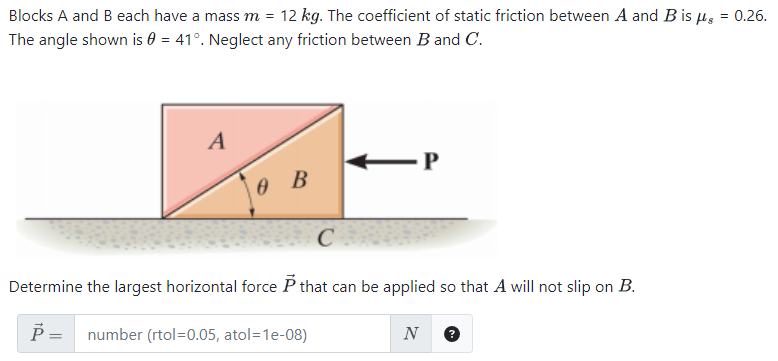Blocks A and B each have a mass m = 12 kg. The coefficient of static friction between A and B is μs = 0.26. The angle shown is θ = 41∘. Neglect any friction between B and C. Determine the largest horizontal force P→ that can be applied so that A will not slip on B. P→ = number (rtol = 0.05, atol = 1 e−08) N
